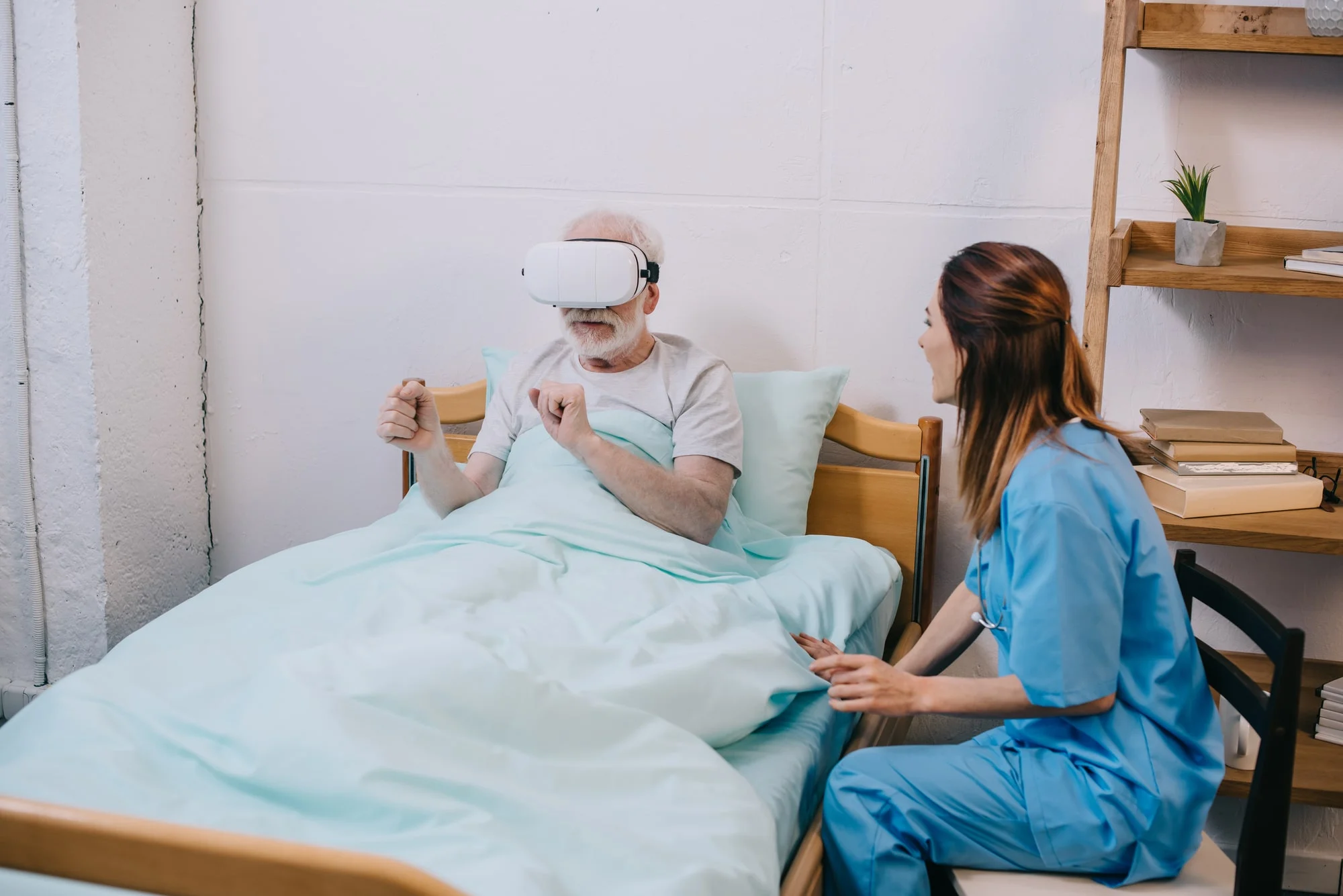Smart aging is an increasingly pressing topic having a profound impact on the well-being of seniors. It’s a fantastic AI-driven intelligence solution that uses web, mobile, and voice-assisted platforms like Alexa to enhance social connection, improve personal enrichment, add an extra level of security, and provide access to state-of-the-art healthcare. It’s been incredibly impactful during the COVID-19 pandemic, allowing senior living community residents to socialize with loved ones and feel safe knowing their health needs will be met.

If they’re not already, senior living providers must leverage today’s most advanced technologies to empower their residences to live a more independent, connected, and healthier life.
The Role of Technology in Smart Aging
Smart aging promotes senior well-being through the seamless integration of the latest technologies into their daily lives. It’s critically important to improving seniors’ lives, mitigating the health effects of aging, and improving the overall quality of senior living environments.
Following four main smart aging areas are considered to improve seniors’ quality of life:
- Living environment, including housing as well as issues like accessibility, safety, and having basic needs met.
- Mental capabilities as they relate to psychological well-being and overall quality of life.
- Social experiences such as digital communications with relatives and friends, support groups, online classes, leisure activities, and artistic expression.
- Physical well-being as it relates to physical activity, physical function, and high quality of physical well-being.
There are also four categories of smart aging-related technologies:
- Information technology that supports social connections as well as contact with healthcare providers.
- Medical systems and devices used to remotely monitor residents’ health.
- Bio-technology to improve health and living systems.
- Robotics supporting residents through tasks like food service delivery and hands-free temperature checks.
Smart aging technology components include things like wearables and telehealth services that significantly contribute to a better quality of life and improve everyday living. For instance, with telehealth technologies, seniors become more aware of their health with minimal effort needed for doctor’s visits, which, in turn, lets them become more proactive in keeping themselves fit and well while remaining independent.
Does Your Senior Living Facility Make the Grade?
Smart aging technology is an investment that benefits residents and providers alike. For facilities, it allows them to offer a more attractive resident experience and increases overall community satisfaction resulting in higher occupancy rates. For residents, it makes it easier to continue social connections and build fulfilling, active lifestyles. And the benefits will continue long after the pandemic is under control.
To ensure residents can take full advantage of everything smart aging technology offers, it’s crucial to have a Wi-Fi system in place that supports continuous streaming technologies like remote patient monitoring, video conferencing, and “store and forward” secure communications. Medical Grade Wi-Fi® from HealthSignals’ offers secure, campus-wide coverage that guarantees residents stay connected whenever and wherever they need to.
Contact us today to learn more.
